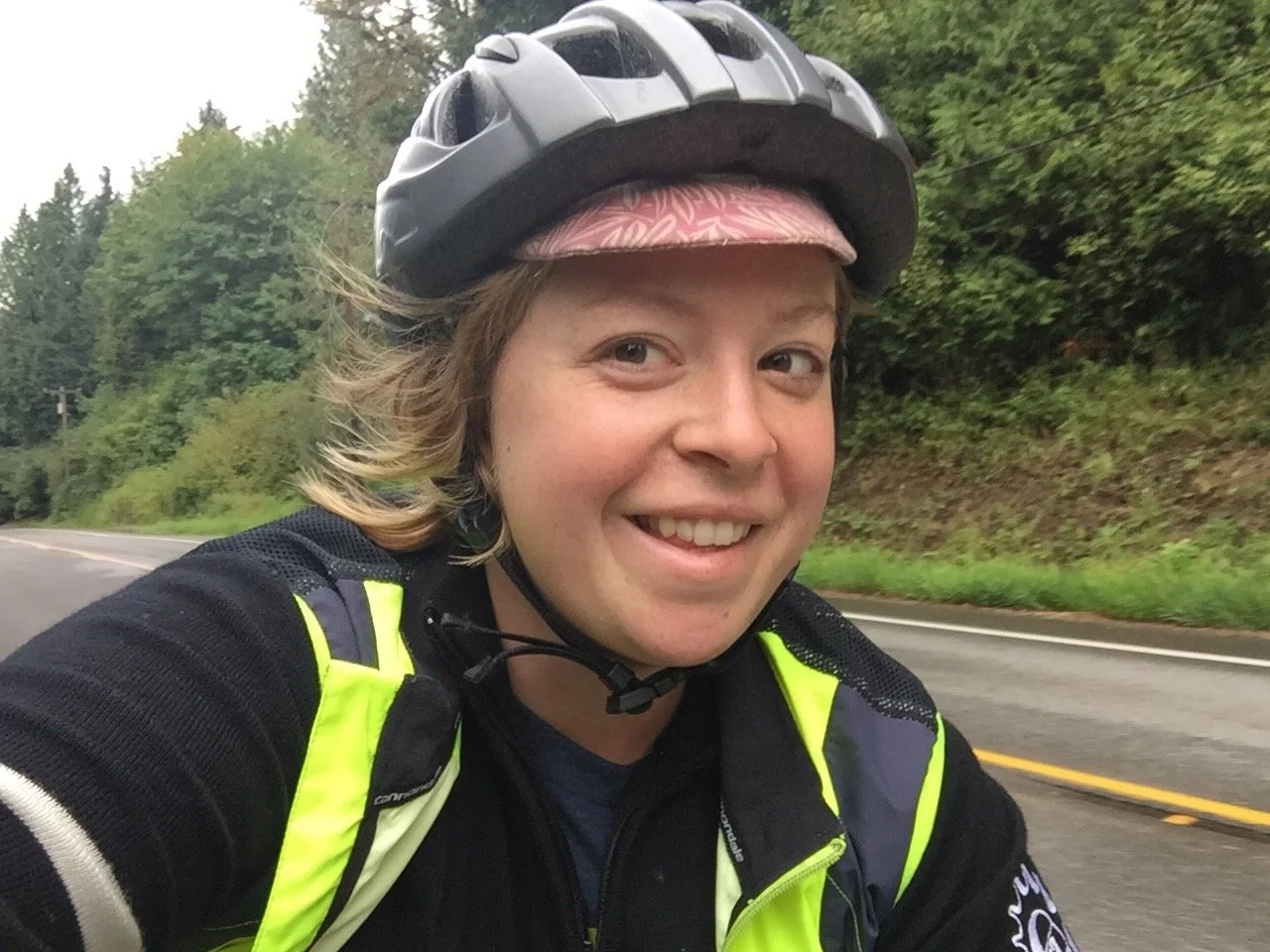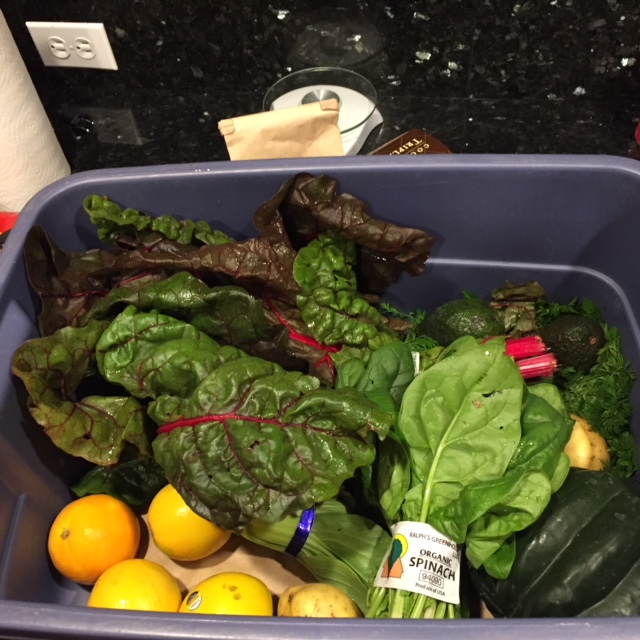This post deviates a bit from the typical subject matter on my blog, but has been weighing on my mind heavily. Aside from riding my bike, I have a full-time job as an Environmental Manager. I spend my days managing the sustainability program for a Fortune 500 company- everything from the recycling program to our carbon footprint to shipping efficiency. I get asked every day what we can do to mitigate our impact on the planet and if what we're doing is actually making a difference. In the big scheme of things, I'm not entirely sure that it is. But, I go to work every day with the optimism and hope that it is. We got ourselves into this situation, and now we need to work to get ourselves out of it.
From crazy strong hurricanes to raging wildfires to 80 degree days in October, the scale and scope of our changing weather patterns feels overwhelming. From being a far-off concept that our grandchildren would need to deal with, we’re now faced with the reality of a changing climate.
Three hurricanes churn in the Atlantic Ocean in an image released by NOAA on September 6, 2017 (image via ABCnews.com)
And often when we talk about the solutions to global warming, we hear about solutions that require massive investment or government scale action to implement such as solar farms or offshore wind farms. It’s easy to feel helpless as an individual.
There are many innovative solutions, however, that are incredibly impactful and are easy to do as just one person.
All 5 of the ideas I’m going to present below are from Project Drawdown. The book is an absolute eye-opener, presenting a down-to-earth, approachable solution to global warming. In less than 250 pages it presents 80 tangible solutions that if implemented could reverse global warming. If you’re looking for an optimistic view on climate change with tangible solutions, check out this project.
They have meticulously researched a bunch of solutions that are already in practice around the globe and ranked the CO2 and monetary savings, and if all of the solutions they put forth are implemented, we can reach a point where we are taking more CO2 from the atmosphere than we are putting in (i.e. the Drawdown point.)
So, back to these 5 solutions. Can you really make a difference as an individual? Yes. We are a global community made up of individuals and to start to make a difference we all must start making changes in our everyday behavior. Here are a few ideas for changes that I think we can work towards:
1. Eat a plant rich diet
Not vegan, not even vegetarian (though that’s great if you want to go that far), but eat a lot more plants and less meat. If cows were their own nation, they would emit the third largest greenhouse gases, behind China and USA. There are all sorts of added benefits to consuming less meat including health benefits, less deforestation, and water savings (cows drink a lot of water, growing grains for feed takes water, etc.).
Veggies from my CSA box last fall
If this was adopted at a reasonable, but vigorous rate, in 2020-2050, we could save 66.11 gigatons of CO2e.*
2. Reducing Food Waste
This one seems like a no-brainer. Nobody likes to waste food, as it’s just throwing money in the trash (or in Seattle, in the compost bin.) The food we waste is also responsible for roughly 8 percent of global emissions.
In low-income countries, food waste is generally due to challenges in distribution, food storage, or other challenges along the point of distribution. Only 3% of food waste in low-income countries comes at the point of consumption.
In high income countries, such as the US, it’s a different story however. Nearly 20% of food is wasted at the point of consumption. Think about the last time you saw a crooked carrot, or ugly apple. We’ve selectively eliminated this produce from our stores, but it still grows. This imperfect produce that is willfully wasted is still perfectly nutritious and could be eaten by any of the hungry people in our country.
In your own home, you can make a difference on this front by buying only the food that you will eat, and if you live on the West Coast there is now a service that sells Imperfect Produce. Other ideas include doing a food waste audit, sharing meals when you go out (to reduce left overs), and learning what the “Sell-By”, “Best-By”, and “Use-By” dates mean (hint-nothing, the USDA doesn’t regulate them.)
3. Buy from farms that practice regenerative agriculture
First a quick primer on Regenerative Agriculture : A farming practice that enhances and sustains the health of the soil by restoring its carbon content, which in turn improves productivity—just the opposite of conventional agriculture. Farms that practice this will do such things as:
no tillage,
diverse cover crops,
in-farm fertility (no external nutrients),
no pesticides or synthetic fertilizers, and
multiple crop rotations.
Why does this matter? It’s estimated that 50% of the world’s carbon in the earth’s soils has been released into the atmosphere in the past centuries. Restoring this through regenerative agriculture will allow the soil to act once again as a carbon sink and help restore the balance. It’s estimated that by 2050, we could see a reduction of 23.2 gigatons of carbon dioxide, from both sequestration and reduced emissions.
So how do I know if a farm is practicing this? Look on the label, or ask at the farmers market!! Shop local! A quick google search turned up 3 CSAs in Seattle that practice regenerative farming!
4. Recycle your Refrigerator & Air Conditioner Responsibly
At this point you’re probably saying “Ok, Marley…these are cool, but what about recycling? When are you going to tell me to recycle and ride my bike?” Well, here you go! Recycle your refrigerator! Before reading Drawdown, I have to admit to not really thinking about refrigerants as a contributor to global warming. At all. But, we should all be thinking about fridges and air conditioners a lot more, as they’re the #1 opportunity to reverse global warming.
Air Conditioners line the windows of Hong Kong (photo from my trip in February)
A quick lesson on these bad boys that make life a whole lot more comfortable. All ACs and fridges use a chemical concoction to cool things. Prior to 1987 they primarily used CFCs and HCFCs to work their magic. Those caused the hole in the ozone layer that any 90s kid could tell you all about. The 1987 Montreal Protocol phased those out, but their replacement HFCs are actually worse (1000 to 9000 times more warming power than carbon dioxide!!!!)
So what to do in a rapidly warming & developing world? Air conditioning definitely makes things more comfortable, especially with increasing heat waves. Well, a new agreement was reached in 2016 that will start to phase out the HFCs starting in 2019 (for high income countries) and 2024 for low income countries. The crux of the issue is that 90% of emissions from refrigerants come at the end of life, so it’s essential that proper disposal happens. Don’t dump these appliances- get them to your local recycling center, where the refrigerants can be disposed of properly!
5. Advocate for Education for Girls & Women
This is perhaps my favorite action that you can take because it’s relevant to each and every one of us. Research shows time and again that women with more years of education have fewer and healthier children, and actively manage their reproductive health. This helps contribute to overall population growth and fewer emissions. I’m going to quote this next part directly from Drawdown because it’s just so damn powerful:
Educated girls realize higher wages and greater upward mobility, contributing to economic growth. Their rates of maternal mortality drop, as do mortality rates of their babies. They are less likely to marry as children or against their will. They have lower incidence of HIV/AIDS and malaria. Their agricultural plots are more productive and their families better nourished.
Education also shores up resilience and equips girls and women to face the impacts of climate change. They can be more effective stewards of food, soil, trees, and water, even as nature’s cycles change. They have greater capacity to cope with shocks from natural disasters and extreme weather events.
Today, there are economic, cultural, and safety-related barriers that impede 62 million girls around the world from realizing their right to education. Key strategies to change that include:
make school affordable;
help girls overcome health barriers;
reduce the time and distance to get to school; and
make schools more girl-friendly.
So, what can you, as a relatively well-to-do person do to help education women and girls? Well, first, get educated on the situation. Even though our reproductive rights are being threatened by the current administration, we are compartively incredibly priveldged. Learn about what is happening around the globe to women and children. Then, pick a cause to help.
Read up on these campaigns from the UN and get involved in one that speaks to you: http://www.unwomen.org/en/get-involved#campaigns
Here's a great way to get involved online: https://www.empowerwomen.org/en
Or, you can always donate money directly to the UN: https://donate.unwomen.org/
So, there you have it! 5 relatively simple things you can start doing today to combat climate change. And yes, you should still reduce your single occupant vehicle trips, recycle, compost, ride your bike, consume less, use less electicity, all of those things.
I’d love to hear other ideas you’re doing and how you’re staying optimistic in this time of global stress.
*A note on gigatons and CO2e. A gigaton is really hard to imagine, because it’s really really really big. As The Washington Post wrote in 2015, “In the International System of Units, the prefix “giga” means 109, or one billion (1,000,000,000). Hence terms like “gigawatt” or “gigahertz.” Thus, a gigaton is equivalent to a billion metric tons. A male African elephant might weigh, at most, 6.8 metric tons, according to the San Diego Zoo. So a gigaton is well over a hundred million African elephants. As for sea life, the blue whale can weigh as much as 146 metric tons, according to NOAA. So a gigaton is more than 6 million blue whales.” (from this article https://www.washingtonpost.com/news/energy-environment/wp/2015/07/01/meet-the-gigaton-the-huge-unit-that-scientists-use-to-track-planetary-change/ )
As for CO2e, it’s an abbreviation for CO2 equivalent. It’s the internationally recognized way of talking about greenhouse gases, so when we talk about CO2e, we’re talking about more than just CO2 – it’s all greenhouse gases.









